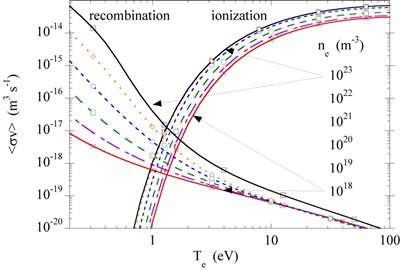 To convert an atom or molecule into an ion via the process called ionization, charged particles like an electron or other ion must either be added or removed (though this is not to be confused with the chemical process called dissociation). To produce a positively charged ion, an electron which has bonded to a molecule or atom must absorb enough ionized energy from the electric potential barrier originally confining it, thus breaking free from the bond and escaping. To produce a negatively charged ion, on the other hand, a free electron must collide with an atom, subsequently getting caught inside the atom's electric potential barrier and releasing any excess energy.
To convert an atom or molecule into an ion via the process called ionization, charged particles like an electron or other ion must either be added or removed (though this is not to be confused with the chemical process called dissociation). To produce a positively charged ion, an electron which has bonded to a molecule or atom must absorb enough ionized energy from the electric potential barrier originally confining it, thus breaking free from the bond and escaping. To produce a negatively charged ion, on the other hand, a free electron must collide with an atom, subsequently getting caught inside the atom's electric potential barrier and releasing any excess energy.
According to classical physics, an electron's energy must always exceed the energy difference of the electric potential barrier it is attempting to pass, in the same way that a person trying to get past an obstacle must be able to jump higher than the obstacle's height. So applying this to positive and negative ionization, you can think of a person trying to exit and then enter a building through revolving doors. To get out she must have enough energy to push the doors that will let her out and the same applies if she wants to get back in.
